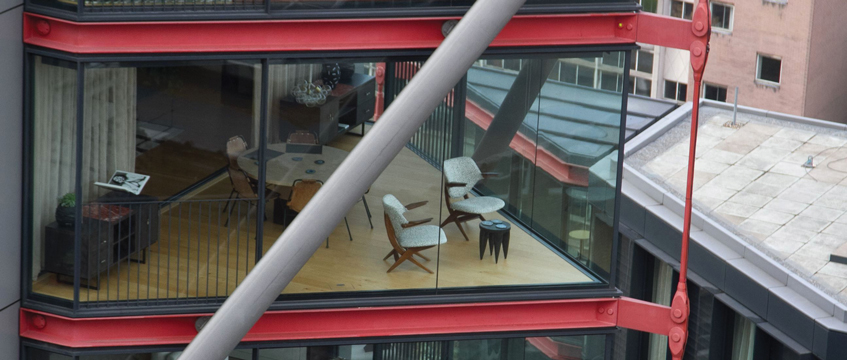COMMENT This article is emphatically not about the long-awaited decision of the Supreme Court in Fearn and others v Board of Trustees of Tate Gallery [2020] EWCA Civ 104; [2020] EGLR 14. That case has been written about more than once in EG, and now we just have to await their lordships.
What this article is about, is attitudes towards dispute resolution. The case (and analogous scenarios) offers a good illustration of how easy it is to see why disputes occur, and how both sides have a legitimate and tenable position. Not all litigants have pockets as deep as the parties in Fearn, involving, on the one hand, apartment residents in a building described by the court as a “striking modern development” in prime central London, and, on the other, the Tate Modern. Both sides had strong and highly valuable interests to protect. The Court of Appeal decision contains a fascinating review of 19th century authority on the law of nuisance, and how rights of privacy or entitlement not to be “overlooked” have not historically been recognised in English courts. These cases were, of course, decided in an era when the vast expanses of glass now commonplace in modern buildings did not exist. We shall see if the Supreme Court or the legislature feels that the law should be changed.
Everybody needs good neighbours
Meanwhile, property mediators are increasingly called on to help seek a resolution when adjoining building owners/occupiers fall out over what each side sees as unreasonableness on the part of the other. Often the cases have similar characteristics. A developer, having gained all the necessary permissions, starts the construction of a multi-storey block. The block will be what the courts have described as “cheek by jowl” with an adjacent, more traditional, large dwelling or residential block. The new block is replacing precisely one of those larger and older constructions.
There is tension between the developers and the adjoining occupiers from the outset. The neighbours see the new building as a “carbuncle” and object, unsuccessfully, at the planning stage. The new building complies sufficiently with the local plan, and is at the required distance, albeit only just. The work starts, and is noisy and messy. Perhaps the inevitable piece of debris has fallen from the scaffolding, damaging a balcony or other part of the fascia of the established building, ratcheting up bad feeling. The construction workers are uncouth (say the adjacent occupiers), with a penchant for loud radios. The workers say the leaseholders next door are just looking for trouble, and should “get a life”.
Neither side even contemplates mediation at an early stage. Each side is just too angry. Fiercely protective of their perceived “rights”, they launch into litigation. The temperature rockets upwards, together with the determination to pursue the case to the bitter end through the courts. Then something happens which increases the temper level even further, and it is surprising how often this trigger occurs.
One set of the existing apartment owners has occasion to be away, perhaps on vacation for a few weeks or travelling for some other reason. When they return, they are shocked to find that there is a window in the new building. One that looks straight into their bedroom. Or maybe it turns out that the building has advanced to a stage where their apartment is now significantly darker than hitherto. Or they can’t open some wide windows properly because the new building is so close. Or the bit of view which they thought they would be retaining, has, for whatever reason, disappeared completely. There are countless other possibilities, and for each you might say, “Well, you should have known that if you had studied the plans properly…” But sometimes, it was not as clear as you might have expected on the plans. And sometimes, even the planners had not taken on board all the consequences of the new building (as was the position in Fearn).
But what really sends the dispute into orbit, is that all this happened “when we were away”. This is clear proof, say the offended parties, that the developers deliberately waited for the absence of those who would be affected most, and precipitately did their worst at exactly that time. The developer says, “That’s nuts, how could we have known when they would be away? And anyway, we have a programme of works which we work to regardless of the movements of adjacent property owners.” Cue more demands for disclosure, more witness statements, amended pleadings…
With a little understanding, you can find the perfect blend
We often hear parties or their advisers contending that it is “too early” to mediate. They need more evidence, more documents, more experts’ reports. Much of this widens, rather than narrows, the gap between the parties. I have a view (if you’ll pardon the pun), and it’s this: the moment the first tension appears, and maybe even before, it is the developers who should take the initiative. Why them? Because a big part of these disputes concerns the perception (often erroneous) that the developers are bullies, ready to push anyone around as necessary, provided their profit margin is maximised. If there is an early, genuine discussion, about the fears people may have about the new development, it is perfectly possible that some of these fears can be accommodated. Of course some maybe unavoidable – but even then, some “trade-off” might help in warding off impending or actual litigatory strife. From the developers’ point of view, it is good business not to get bogged down in a time-consuming and delaying dispute. Time, as we know, is itself money.
The phrase oft quoted in all those old legal authorities mentioned above, is that there should be some application of “the rule of give and take, live and let live” (Baron Bramwell, Bamford v Turnley (1862) 3 B&S 66). Perhaps the law is not such an ass after all?
Stephen Shaw is a barrister and mediator at www.stephenshawmediation.com










